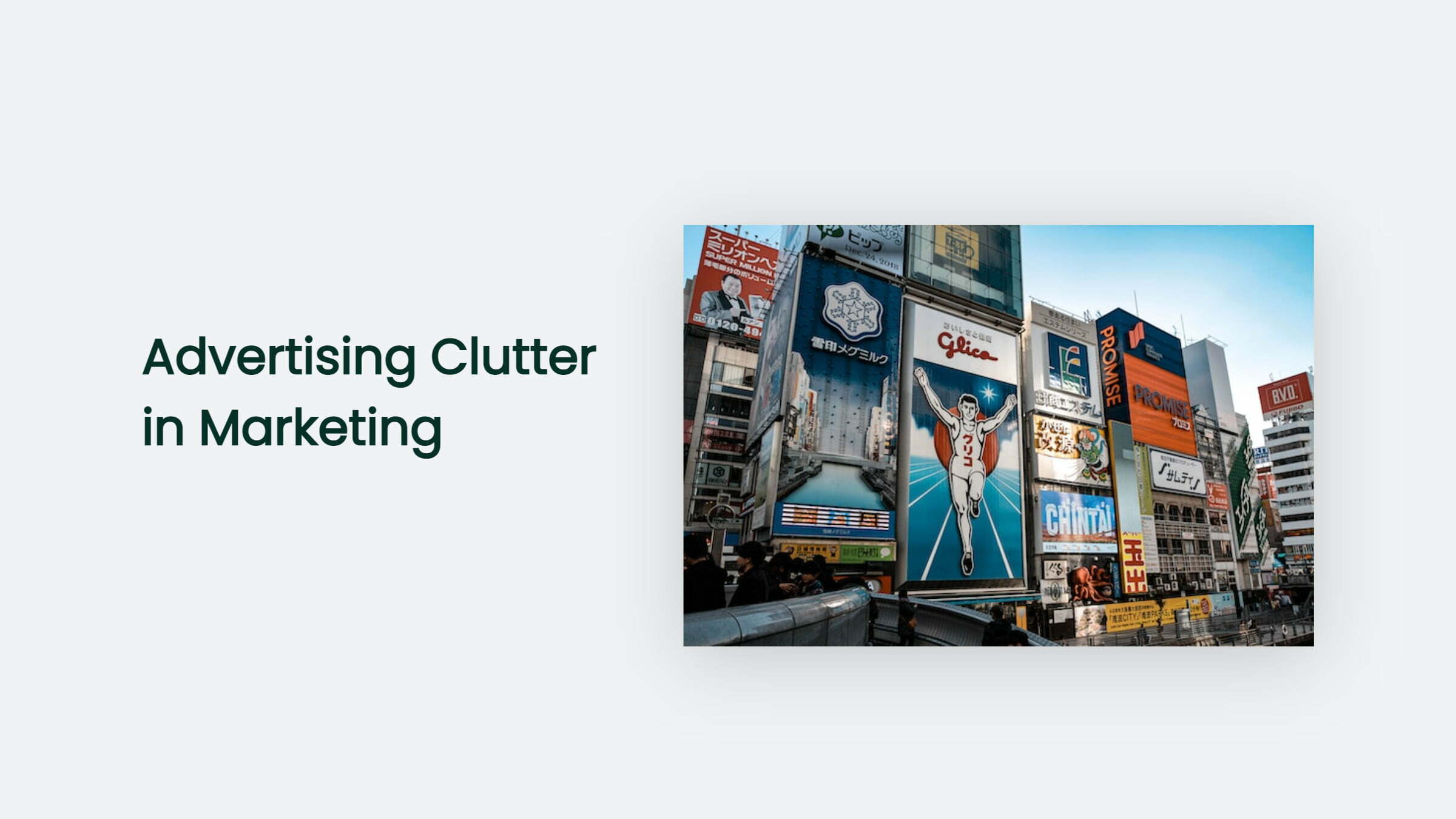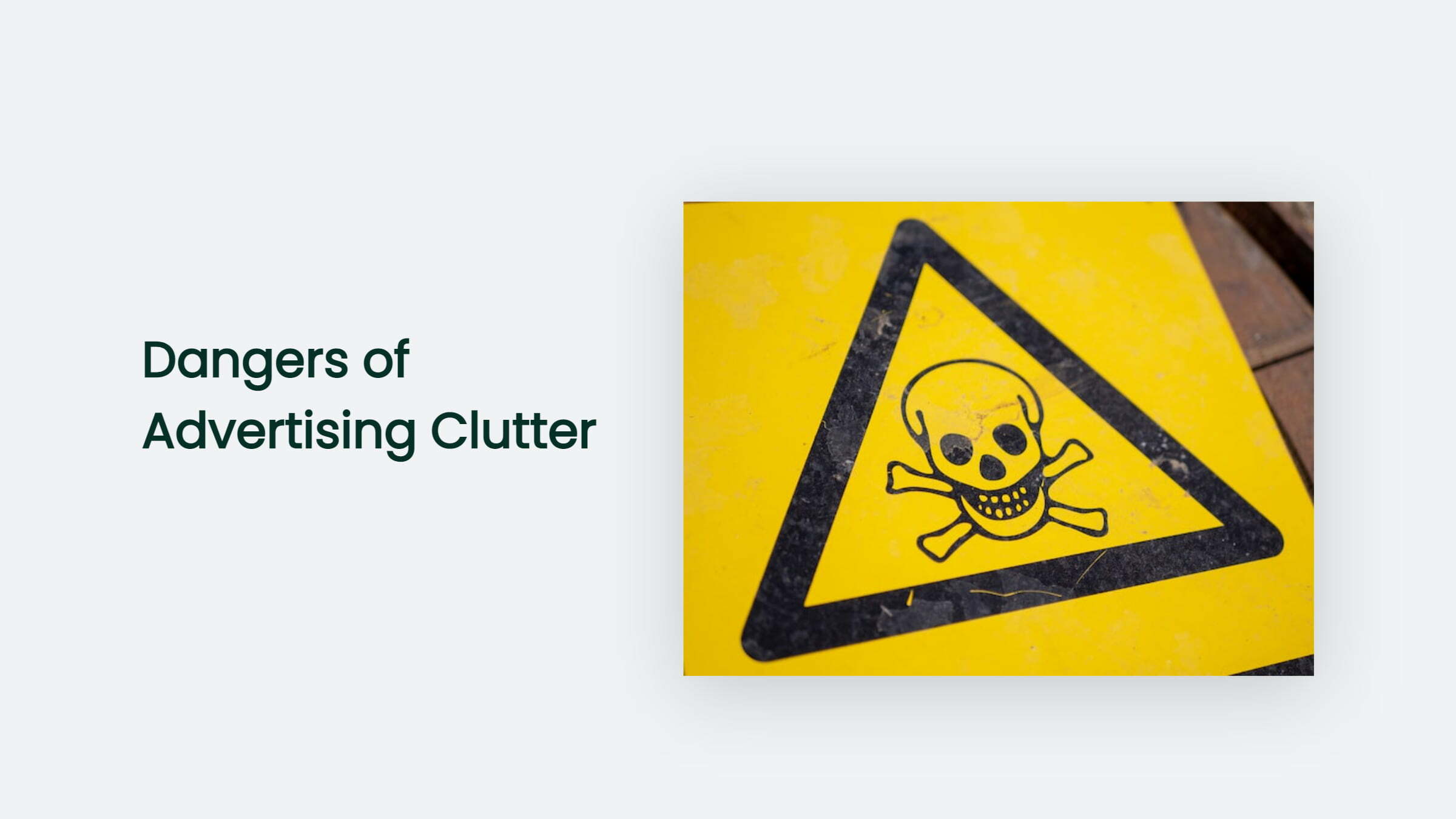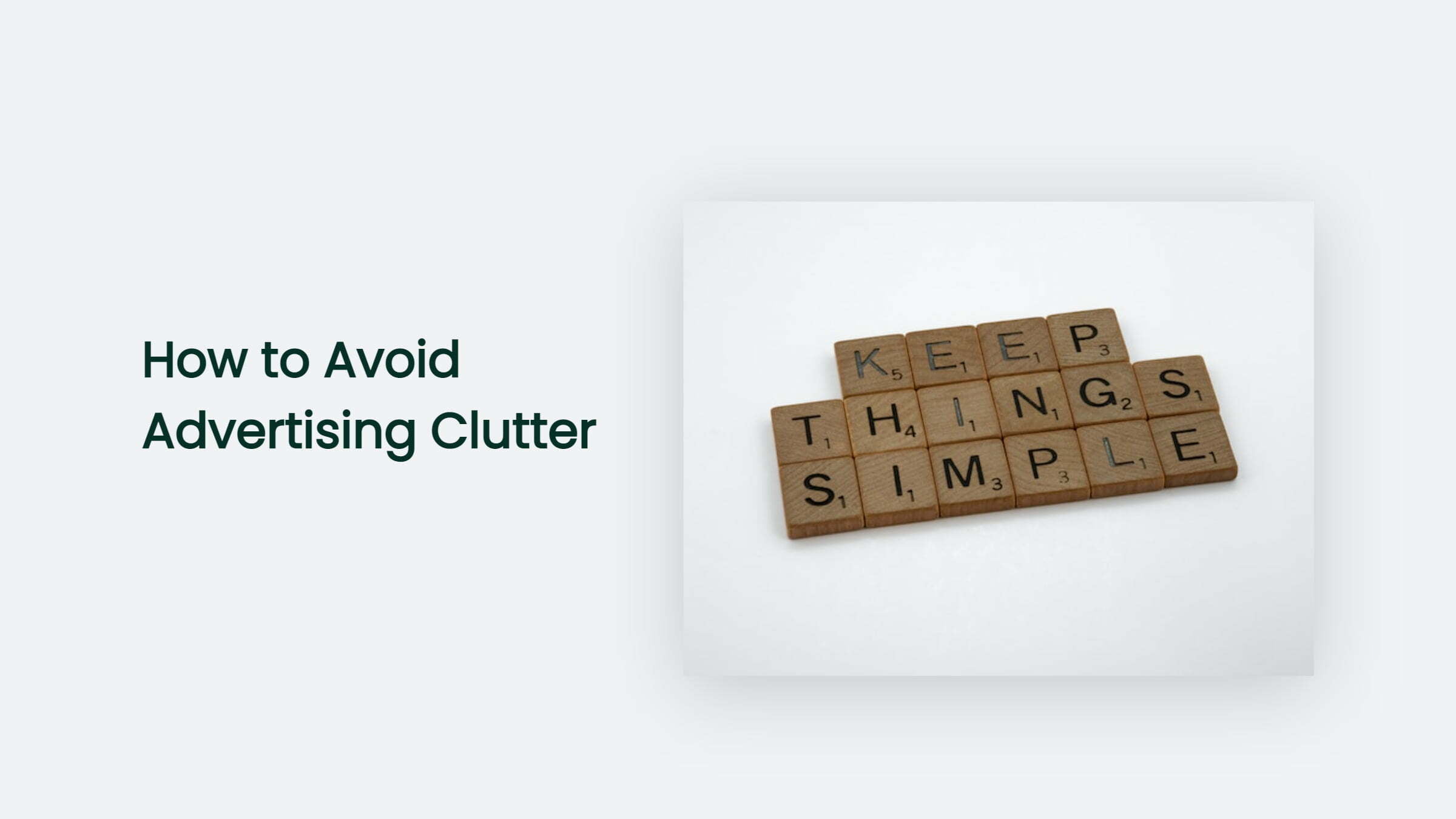

What is Advertising Clutter in Marketing: Everything to Help You Out in 2023

As Seen On
Did you know that the typical person is exposed to up to 10,000 advertising messages on a daily basis?
With all of the clutter in the marketplace, it’s no wonder that businesses are constantly looking for ways to stand out from the competition.
In this blog post, we’ll look at what is advertising clutter in marketing and some tips on how to avoid it.
So, if you’re looking to improve your advertising strategies, be sure to read on!
Table of Contents

But first, let’s understand.
What is Advertising Clutter in Marketing?
Advertising clutter is a term used in the marketing industry to describe the over-saturation of advertising messages in the marketplace.
With so many brands and companies vying for consumer attention, it can be difficult for any one message to break through the noise.
It can lead to higher costs for advertisers, as they must find more innovative and expensive ways to reach their target audiences.
Additionally, advertising clutter can cause consumers to tune out all advertising messages, making it difficult for even well-crafted campaigns to have an impact.
As a result, marketers must plan and execute strategies to ensure their message cuts through the clutter and reaches its intended audience.
The Dangers of Advertising Clutter:

Increased Costs:
As the number of adverts on TV, radio, the internet, billboards and other media has increased, so too has the cost of advertising.
Businesses compete for a limited amount of space and time and are willing to pay more to ensure that their adverts are seen and heard.
As a result, advertising costs have soared, which is terrible news for businesses and consumers.
Difficulty Reaching Target Audience:
Another danger of advertising clutter is that it can make it difficult for businesses to reach their target audience.
As consumers are bombarded with more and more marketing messages, they may begin to tune out all advertising altogether.
It makes it difficult for businesses to break through the noise and get their message across. Thus, hampering their ability to attract new customers.
Lower Response Rates:
In addition to making it difficult to reach consumers, advertising clutter can lead to lower response rates.
Consumers may be less likely to engage with any particular message with so many options available.
Weakened message impact:
For businesses, it can weaken the impact of their message and make it more challenging to stand out from the competition.
Consumers may become overwhelmed by the sheer volume of ads they are exposed to and begin to tune them out altogether.
In extreme cases, this can lead to a feeling of “ad fatigue,” where people are so bombarded with marketing messages that they no longer have any patience for them.
Decreased ROI:
In a world where we are constantly bombarded with advertising messages, it’s easy for your company’s message to get lost in the clutter.
Not only does this make it difficult for potential customers to see your message, but it also decreases the ROI of your advertising efforts.
When customers are constantly bombarded with advertising messages, they become immune to them and are less likely to take notice of your company’s message.
To maximize the ROI of your advertising campaign, you need to make sure that your message stands out from the clutter.
How to Avoid Advertising Clutter:

The best way to avoid advertising clutter is to create a unique and attention-grabbing marketing message.
Your message should be different from the rest, and it should be something that your target audience will want to hear.
You’ll need to get creative with your ad campaigns and find new and innovative ways to reach your target consumers.
Here are some tips on how to avoid advertising clutter:
Make Your Message Stand Out
As we mentioned before, one of the best ways to avoid advertising clutter is to ensure that your message stands out from the rest.
You’ll need to get creative with your ad campaigns and find new and innovative ways to reach your target consumers.
Some ideas include using unexpected visuals, using humour, or creating a call to action that is impossible to resist
Whatever you do, make sure that your message is unique and attention-grabbing.
Research your target audience (Consumer Research):
To avoid advertising clutter, it is essential first to understand your target audience. It would involve a lot of advertising research, but you can connect with potential customers better.
Who are you trying to reach? What age group, gender, income level, etc.? Once you understand who your target audience is, you can begin to research the best ways to reach them.
Not all audiences are the same, so it is essential to tailor your approach accordingly. For example, if you are targeting young adults, you might consider using social media platforms such as Snapchat and Instagram.
However, if you are targeting a more mature audience, you might consider using traditional media such as television or print ads.
By taking the time to research your target audience, you can significantly improve your chances of avoiding advertising clutter.
Choose your channels wisely:
With the proliferation of channels and touchpoints, it’s more important than ever for marketers to be strategic about where they place their advertising.
Ad clutter is a real problem – customers are bombarded with so many messages that it’s difficult for anyone to stand out.
To avoid getting lost in the clutter, it’s essential to select the channels that will reach your target audience carefully.
For example, if you’re trying to reach millennials, you might consider placing advertisements on Snapchat, Facebook or Instagram. And if you want to reach an older demographic, TV or print might be a better bet.
By being strategic about where you place your advertisements, you can ensure that your message will be seen by the most likely convert people.
Timing is everything:
In today’s advertising landscape, it’s more important than ever to stand out from the clutter.
With so many brands competing for consumers’ attention, finding ways to cut through the noise and make your message heard is essential.
One way to avoid advertising clutter is to time your campaign carefully.
Unless you have a unique message, it’s unlikely that you’ll be able to break through the clutter if you’re running ads simultaneously as everyone else.
Instead, try to run your ad when other brands are not running ads. It will allow you to capture consumers’ attention when they’re not being bombarded with different messages. You can also try aligning your ad messages with current issues to promote yourself better.
Of course, timing isn’t everything; your ad must be well-crafted and relevant to your target audience.
But if you can find a way to stand out from the clutter, you’ll be one step ahead of the competition.
Less is more:
In our highly competitive economy, businesses are always looking for ways to stand out from the crowd and get noticed by consumers.
However, such a thing is too much of a good thing. When businesses bombard consumers with too many marketing messages, it can create a feeling of overwhelming “clutter.”
It can turn potential customers away rather than pique their interest. So how can businesses avoid becoming part of the clutter?
The key is to focus on quality over quantity. It’s better to have a few well-crafted, targeted messages than a barrage of generic ads.
In addition, businesses should consider using new and innovative channels to reach their target audience. Traditional forms of advertising, such as television and print ads, are becoming less effective as consumers increasingly tune them out.
Instead, businesses should consider alternatives such as online advertising, viral marketing, or guerilla marketing tactics. By thinking outside the box, companies can avoid clutter and get their message heard loud and clear.
Test Your Ads
In a world where we are bombarded with advertising from every direction, creating ads that stand out from the clutter is more important than ever.
But how can you be sure that your ad will grab attention and deliver your message effectively? The answer is to test your ad before you launch it.
There are several ways to test an ad, but one of the most effective is to use a split test.
One way to do this is to use A/B testing, a technique that allows you to compare two versions of an ad to see which one performs better. You can measure several factors, such as click-through rate, conversion rate, and cost per acquisition.
By testing your ads before you launch them, you can be sure that you are creating an effective marketing campaign to reach your target audience and achieve your desired results.
It is a great way to fine-tune your ad campaign and ensure you get the most out of your advertising efforts.
These are just a few of the ways that you can avoid advertising clutter.
Following these tips can create a compelling and attention-grabbing ad campaign that will help your business.
Frequently Asked Questions
What is clutter strategy?
The clutter strategy is a marketing technique that involves standing out from the crowd by timing your ad campaign carefully, focusing on quality over quantity, and testing your ads before you launch them.
Why is it important to avoid advertising clutter?
Advertising clutter can turn potential customers away, so finding ways to stand out from the crowd is essential.
How can I test my ad before I launch it?
One way to test your ad is to use a split test, such as A/B testing, which allows you to compare two different versions of an ad. By testing your ads before you launch them, you can be sure that you are creating an effective marketing campaign.
What are some alternative ways to reach my target audience?
Some alternative ways to reach your target audience include online advertising, viral marketing, or guerilla marketing tactics. By thinking outside the box, you can avoid clutter and get your message heard loud and clear.
The Bottom Line:
Advertising clutter is a real problem facing businesses today. With so many brands competing for attention, it’s becoming increasingly difficult for companies to cut through the noise and reach their target audiences.
However, by taking proactive steps—such as researching your target audience, choosing your channels wisely, and timing your ad campaigns carefully—you can avoid getting lost in the advertising clutter and stay ahead of the competition.
Konger
Up until working with Casey, we had only had poor to mediocre experiences outsourcing work to agencies. Casey & the team at CJ&CO are the exception to the rule.
Communication was beyond great, his understanding of our vision was phenomenal, and instead of needing babysitting like the other agencies we worked with, he was not only completely dependable but also gave us sound suggestions on how to get better results, at the risk of us not needing him for the initial job we requested (absolute gem).
This has truly been the first time we worked with someone outside of our business that quickly grasped our vision, and that I could completely forget about and would still deliver above expectations.
I honestly can't wait to work in many more projects together!
Disclaimer
*The information this blog provides is for general informational purposes only and is not intended as financial or professional advice. The information may not reflect current developments and may be changed or updated without notice. Any opinions expressed on this blog are the author’s own and do not necessarily reflect the views of the author’s employer or any other organization. You should not act or rely on any information contained in this blog without first seeking the advice of a professional. No representation or warranty, express or implied, is made as to the accuracy or completeness of the information contained in this blog. The author and affiliated parties assume no liability for any errors or omissions.

